I said in my last post that I'd soon return to our regularly scheduled Arizona nature programming, so here you go. Less ranty and more picturey.
Without further ado, the species.
Day 78: White-winged dove, Zenaida asiatica
Bird of peace, my ass.
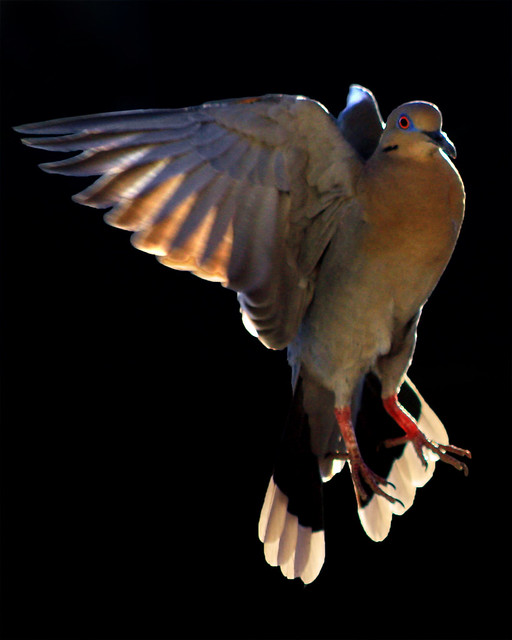 These guys are the big, oafish bullies of our backyard. We have a dove block, and a platform feeder, and lots of dove-friendly things for them. They don't care. They prefer the smaller finch feeder; full of flimsy, tiny perches; and usually also full of pissed-off finches and sparrows. White-winged doves take what they feel like taking, whether they fit or not.
These guys are the big, oafish bullies of our backyard. We have a dove block, and a platform feeder, and lots of dove-friendly things for them. They don't care. They prefer the smaller finch feeder; full of flimsy, tiny perches; and usually also full of pissed-off finches and sparrows. White-winged doves take what they feel like taking, whether they fit or not.
They are beautiful, though. Chunky in build, with flame-colored eyes that almost glow; each surrounded by neon blue, featherless skin that looks undeniably like costume makeup.
Honestly, the first time I was exposed to the white-winged dove wasn't even the bird itself; but in the Stevie Nicks song "Edge of Seventeen" -- Just like the white-winged dove sings a song; sounds like she's singin' Oooh, oooh, oooh.
Whether it's their call or their near-ubiquity, people like to tell stories about these birds. They're featured heavily in both Biblical and Greek mythology, often with an olive branch, a symbol of renewal and peace (obviously the writers had never seen my backyard). Doves appear in Roman, Indian, Native American, and Japanese stories as well; and in possibly a more fitting theme, a dove was even a harbinger of disaster in Celtic lore. Even the constellations feature several doves, most notably Columba. It's portrayed holding an olive branch, which I can only assume it stole from a finch.
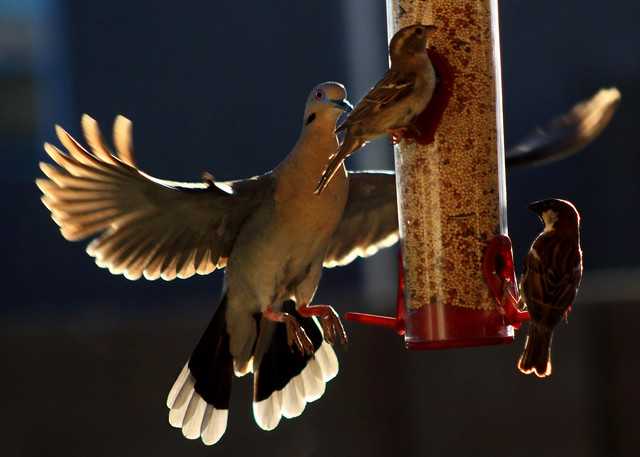
Day 79: Green heron, Butorides virescens
Solitary and secretive. A small heron, not much bigger than a crow, it likes to feed alone or in pairs, and eats small fish and whatever other water goodies it can find.
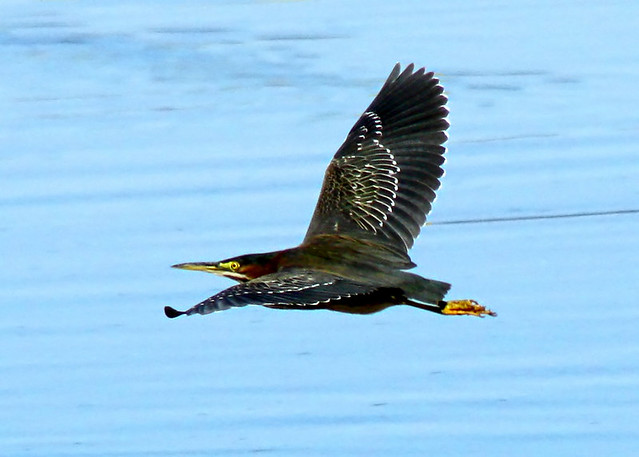
It exudes wariness and is exceedingly good at vanishing -- I've lost count of the amount of times we've been scouring the far bank for a heron that we knew was there and stared right past it; only to catch it for a second later when it flicked its tail in annoyance, erected its short crest, and flew away. Even a small marsh or vegetated pond area can support a decent-sized green heron population, with most people never noticing them.
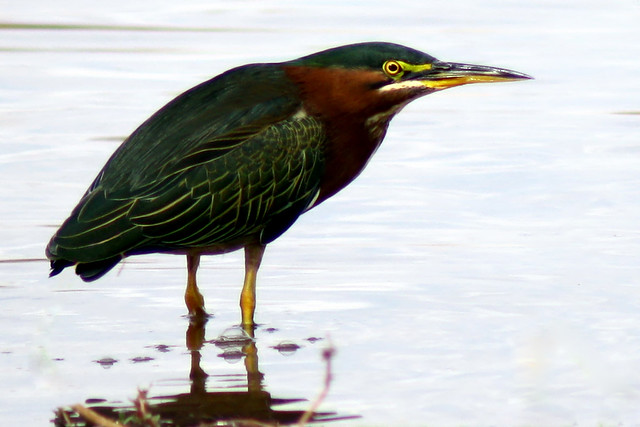
If you can manage not to scare it off, they're fun to watch while hunting. They practically launch their heads and beaks at their prey. And doesn't it remind you of the guys in Spy vs. Spy?
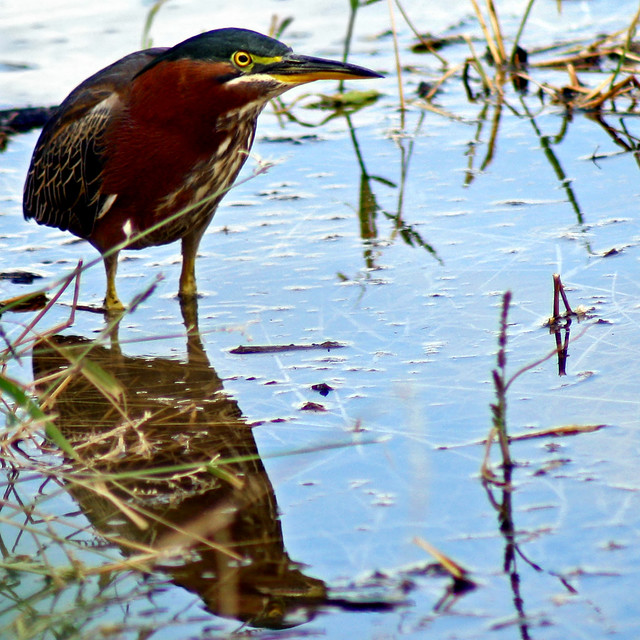
Day 80: Vermilion flycatcher, Pyrocephalus rubinus
There are a few birds that I photograph and people tend to ask if I altered the image -- surely the color isn't that vivid? -- and probably none more so than these radiantly vivid birds, whose males sport eye-poppingly intense red contrasted with very dark brown, almost black, backs and eye bars.
 I always used to picture a more subdued orange-red when I heard the word vermillion -- like the Vermilion Cliffs, north of the Grand Canyon. Not so with the vermillion flycatcher, whose scientific name, translated as something like "firehead red," only seems to rub it in. Even my boring field guide, which can say nothing more extreme about the bald eagle than "readily identifiable," calls the vermillion flycatcher "brilliant" and "striking."
I always used to picture a more subdued orange-red when I heard the word vermillion -- like the Vermilion Cliffs, north of the Grand Canyon. Not so with the vermillion flycatcher, whose scientific name, translated as something like "firehead red," only seems to rub it in. Even my boring field guide, which can say nothing more extreme about the bald eagle than "readily identifiable," calls the vermillion flycatcher "brilliant" and "striking."
 The distinctive plumage helps attract mates, no doubt; but the male doesn't rely on looks alone. He performs a courtship display where he'll puff up his red feathers, soar up into the air, flutter erratically for a bit, and land right in front of a female with his tinkling peet-a-see call. Which, I've got to say, is probably less silly than some human rituals that serve the same purpose.
The distinctive plumage helps attract mates, no doubt; but the male doesn't rely on looks alone. He performs a courtship display where he'll puff up his red feathers, soar up into the air, flutter erratically for a bit, and land right in front of a female with his tinkling peet-a-see call. Which, I've got to say, is probably less silly than some human rituals that serve the same purpose.
Day 81: Red-eared slider, Trachemys scripta elegans
Red-eared sliders are popular as pets, but also native to the Southern United States, so between native and introduced populations, if you see a turtle in any pond around the Valley, it's probably a red-eared slider.
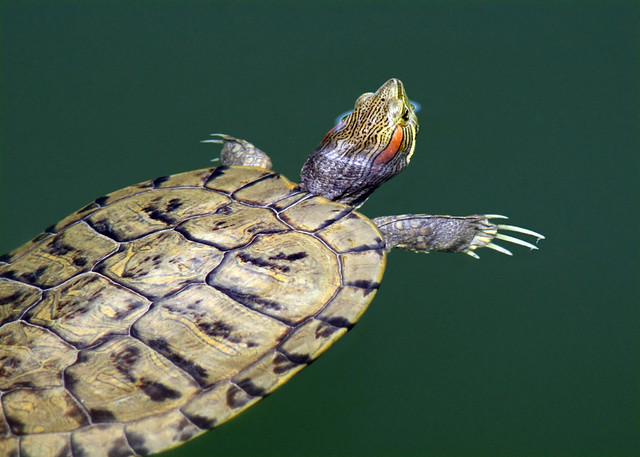 The "red-eared" part of the name is obvious, and when you see sliders in action, that part becomes clear too. They can slip off a log or rock with uncanny speed and grace, only making a faint "plop," which is often your only sign that a turtle used to be there, and saw you first. Still, they're not hard to spot, especially as they like to sun themselves on partially submerged logs or rocks. They're pretty calm characters, though they can be pretty aggressive when food is involved. Being omnivorous means they can eat anything, which generally includes vegetation and smaller animals like crickets or crayfish -- but I've heard of turtles reportedly eating very small members of their species on rare occasions, which seems to be taking the whole "eat anything" part a bit far. And they look far too cute to be cannibals.
The "red-eared" part of the name is obvious, and when you see sliders in action, that part becomes clear too. They can slip off a log or rock with uncanny speed and grace, only making a faint "plop," which is often your only sign that a turtle used to be there, and saw you first. Still, they're not hard to spot, especially as they like to sun themselves on partially submerged logs or rocks. They're pretty calm characters, though they can be pretty aggressive when food is involved. Being omnivorous means they can eat anything, which generally includes vegetation and smaller animals like crickets or crayfish -- but I've heard of turtles reportedly eating very small members of their species on rare occasions, which seems to be taking the whole "eat anything" part a bit far. And they look far too cute to be cannibals.
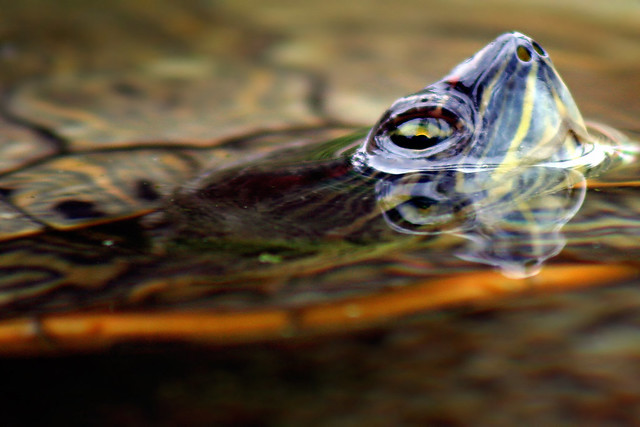
Day 82 (Endangered Species Day, Part 1): Desert pupfish, Genus Cyprinodon
 The only exception to my "rules" (newly taken pics, in the wild), I wanted to add this one for Endangered Species Day. This is from a hike I took a several years ago to cover an effort by Arizona Game and Fish Department, U.S. Fish and Wildlife Service and Bureau of Land Management to relocate some fish. And by "hike" I mean "strenuous boulder scrambling" and by "relocate some fish" I mean "seriously badass conservation efforts." Historically, the desert pupfish have lived in the Gila River basin and the San Pedro, Salt and lower Colorado rivers in Arizona, but introduced species and other environmental threats combined to seriously threaten the species. So we clambered over boulders, reached a super-remote stream about a thousand feet down in the canyon, and met a helicopter flown by a former military precision-drop pilot, who conveyed the fish. The fish's new home is in Agua Fria National Monument's Lousy Canyon, and lovely stream at the bottom notwithstanding, it really is well named. Not a place for a leisurely stroll. Still, it was a heck of an effort, and the pupfish is a pretty awesome little fish. It can tolerate water temperatures reaching 115 degrees Fahrenheit, salinity of 20 percent, and extremely low oxygen levels. It's actually been suggested that desert pupfish may be able to help in skin cancer and kidney research.
The only exception to my "rules" (newly taken pics, in the wild), I wanted to add this one for Endangered Species Day. This is from a hike I took a several years ago to cover an effort by Arizona Game and Fish Department, U.S. Fish and Wildlife Service and Bureau of Land Management to relocate some fish. And by "hike" I mean "strenuous boulder scrambling" and by "relocate some fish" I mean "seriously badass conservation efforts." Historically, the desert pupfish have lived in the Gila River basin and the San Pedro, Salt and lower Colorado rivers in Arizona, but introduced species and other environmental threats combined to seriously threaten the species. So we clambered over boulders, reached a super-remote stream about a thousand feet down in the canyon, and met a helicopter flown by a former military precision-drop pilot, who conveyed the fish. The fish's new home is in Agua Fria National Monument's Lousy Canyon, and lovely stream at the bottom notwithstanding, it really is well named. Not a place for a leisurely stroll. Still, it was a heck of an effort, and the pupfish is a pretty awesome little fish. It can tolerate water temperatures reaching 115 degrees Fahrenheit, salinity of 20 percent, and extremely low oxygen levels. It's actually been suggested that desert pupfish may be able to help in skin cancer and kidney research.
Day 82 (Endangered Species Day, Part 2): Desert tortoise, Gopherus agassizii
Another endangered Arizona animal. Not a giant tortoise, which many people seem to think. Desert tortoises are about 15 inches long and only about six inches tall, though they do have very impressive front legs, armed with shield-like scales and digging claws (actually sharp, modified scales).
 The number of desert tortoises has decreased rapidly in the last several decades, due to factors like habitat loss and fragmentation, illegal collection, and pressures from their natural predators. This, combined with the fact that they spend up to 95 percent of their time underground, makes them a rare sight indeed. Left undisturbed, these are hardy animals. They can live where ground temperatures exceed 140 degrees Fahrenheit, owing to their ability to quickly burrow underground where it's cooler. (They leave a half-moon shaped entrance to their burrows), and can live to be up to 80 to 100 years old, just like that giant tortoise you might be thinking about.
The number of desert tortoises has decreased rapidly in the last several decades, due to factors like habitat loss and fragmentation, illegal collection, and pressures from their natural predators. This, combined with the fact that they spend up to 95 percent of their time underground, makes them a rare sight indeed. Left undisturbed, these are hardy animals. They can live where ground temperatures exceed 140 degrees Fahrenheit, owing to their ability to quickly burrow underground where it's cooler. (They leave a half-moon shaped entrance to their burrows), and can live to be up to 80 to 100 years old, just like that giant tortoise you might be thinking about.
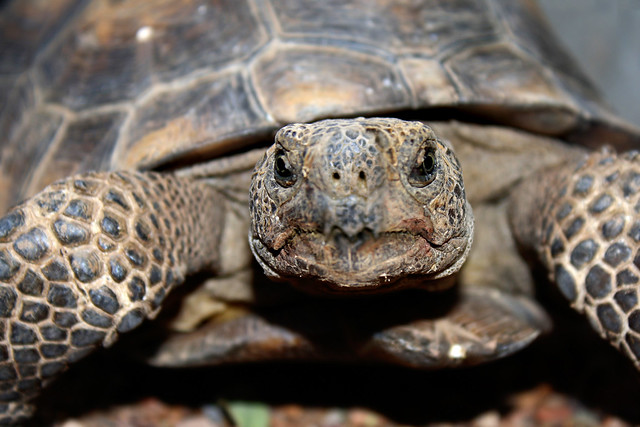
Day 83: Harris's antelope squirrel, Ammospermophilus harrisii
A small ground squirrel native to southern Arizona, Harris's antelope squirrel (and all antelope squirrels, also called antelope ground squirrels) can survive in extreme heat, and has adapted to thrive even as its internal body temperature tops 104 or 105 degrees Fahrenheit. I know the last time I had a temperature that high, I was afraid the animals in the wallpaper pattern were coming to life, and I wasn't doing so great at plain old surviving, much less thriving; so my figurative hat is off to them.
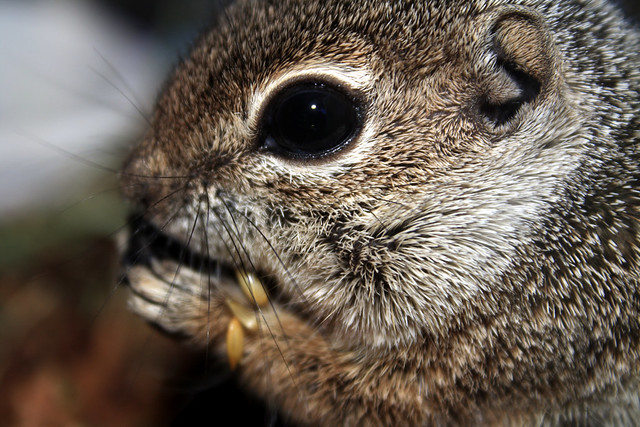 Antelope squirrels are small, no bigger than ten inches long, with a white stripe down the back. They live in burrows that they dig themselves. They're omnivorous and diurnal, and do not hibernate. They're also really good at causing animosity between drivers, as they're big enough for the first car to dodge or slam on the brakes; but are small enough, or fast enough, or maybe employ a cloaking device; so that the other cars never see it and think the first car's driver is an idiot and they must tell her so with enthusiastic language and prodigious use of middle fingers. Not that I know anything about that. Also, they're not called chipmunks, but if you tell your husband that he'll probably just think you're being a know-it-all. Not that I know anything about that either.
Antelope squirrels are small, no bigger than ten inches long, with a white stripe down the back. They live in burrows that they dig themselves. They're omnivorous and diurnal, and do not hibernate. They're also really good at causing animosity between drivers, as they're big enough for the first car to dodge or slam on the brakes; but are small enough, or fast enough, or maybe employ a cloaking device; so that the other cars never see it and think the first car's driver is an idiot and they must tell her so with enthusiastic language and prodigious use of middle fingers. Not that I know anything about that. Also, they're not called chipmunks, but if you tell your husband that he'll probably just think you're being a know-it-all. Not that I know anything about that either.
Day 84: Grote's underwing, Catocala grotiana
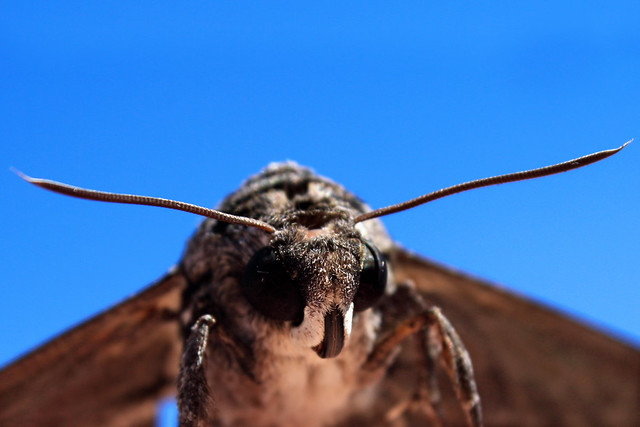 Moths that come out during the day, according to Virginia Woolf, "are not properly to be called moths ... They are hybrid creatures, neither gay like butterflies nor sombre like their own species." I'm totally behind Woolf on the room of one's own thing (not that it'll ever happen to me), but I've got to differ with her here. The underwing moths we see come out in the morning or late evening, so they might indeed be "hybrid creatures" in Woolf's figurative sense, but I don't think it's that they're neither bright and cheery nor somber and deep -- I rather think it's that they're both.
Moths that come out during the day, according to Virginia Woolf, "are not properly to be called moths ... They are hybrid creatures, neither gay like butterflies nor sombre like their own species." I'm totally behind Woolf on the room of one's own thing (not that it'll ever happen to me), but I've got to differ with her here. The underwing moths we see come out in the morning or late evening, so they might indeed be "hybrid creatures" in Woolf's figurative sense, but I don't think it's that they're neither bright and cheery nor somber and deep -- I rather think it's that they're both.
We saved this one after the rain. We found it clinging to our screen door, waterlogged and unable to take off, owing to the fact that it was perched beneath a dripping section of roof (I said they were cheerful and also serious; not smart). We scooped it off the door and brought it into the sun to dry and warm its wings.
 The insect slowly flexed its wings and spooled and unspooled its proboscis on my son's hand, as if testing out all its parts. When it was satisfied that everything was back in commission, it took off, flying until we could no longer see it. My son was thrilled, and it was plenty cheesy of a moment, but it was also serious and alien enough to have that cool air of mystery. A mysterious figure with a pink-accented cloak. Why not?
The insect slowly flexed its wings and spooled and unspooled its proboscis on my son's hand, as if testing out all its parts. When it was satisfied that everything was back in commission, it took off, flying until we could no longer see it. My son was thrilled, and it was plenty cheesy of a moment, but it was also serious and alien enough to have that cool air of mystery. A mysterious figure with a pink-accented cloak. Why not?
I'll have a hard time rooting against Mothra next time.
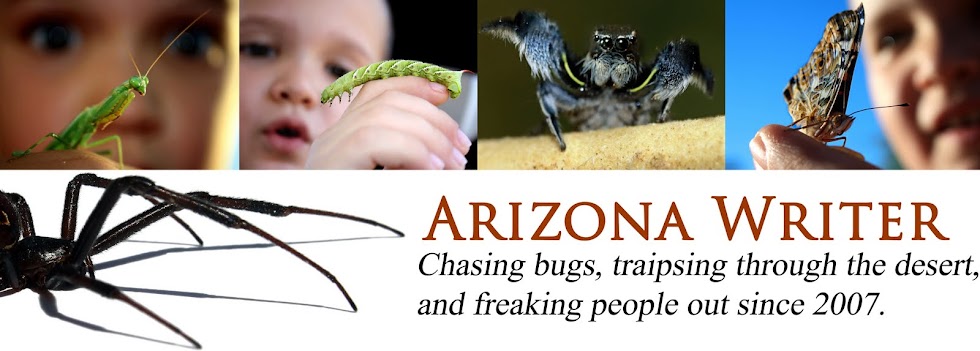
7 comments:
Awesome creatures! Love all the images!
It's always such a pleasure to read your lines and look at your incredible pictures!
love the proboscis on that moth! Reminds me of that weird fruit-leather stuff.
Thanks, you guys!
Christina, you're right! I hadn't thought of that, but the texture does look similar.
Kim, I know I rarely comment, but I just have to say: your photography is truly stunning! I've been trying to shoot the birds that come to my new bird feeder, and it's given me a lot of respect for you!! :)
Thank you so much, Angie.
I love those images of this creature and I enjoy reading it too.It is really informative. You capture the right angle well. I'm totally impressed. :D
Post a Comment